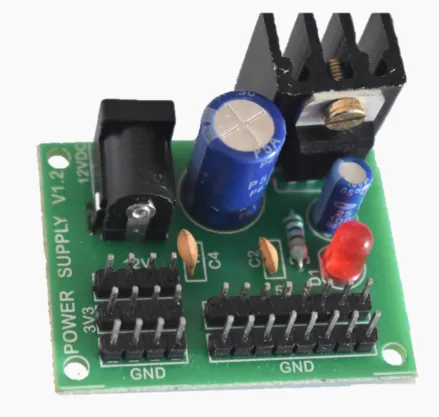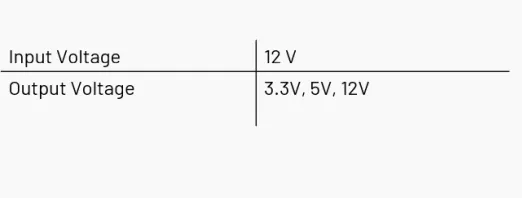Exploring the World of Components: A Beginner's Guide
IR Proximity Sensor
An IR (Infrared) proxy sensor is a device that detects the presence or absence of an object using infrared light. It emits infrared radiation and measures the reflection or absorption of this light to determine the object's proximity. These sensors are commonly used in automation, robotics, and electronic devices for object detection and obstacle avoidance.
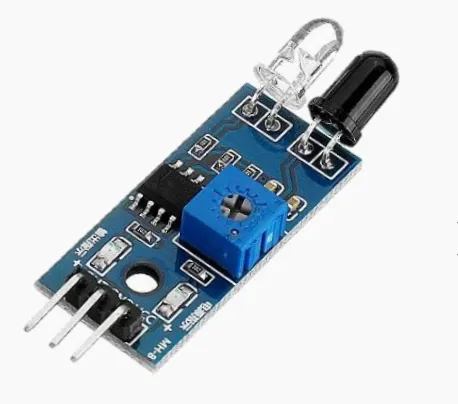
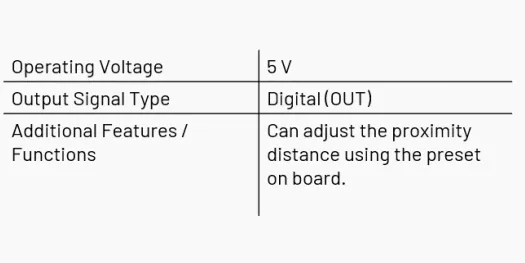
HC-SR04 (Ultrasonic Sensor)
The HC-SR04 is an ultrasonic sensor commonly used for distance measurement. It emits ultrasonic sound waves and calculates distances based on the time it takes for the waves to bounce back after hitting an object. Widely used in robotics and automation, it provides accurate non-contact distance measurements for various applications.

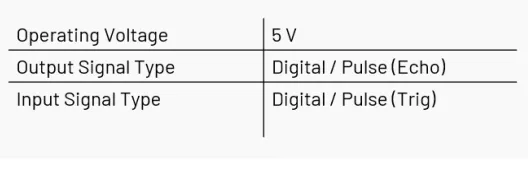
PIR - Motion Sensor
A PIR (Passive Infrared) motion sensor is a device that detects changes in heat radiation within its field of view. It's commonly used in security systems and lighting control. When it senses motion, it triggers an event, making it ideal for automating lights or alerting security systems to potential intruders.
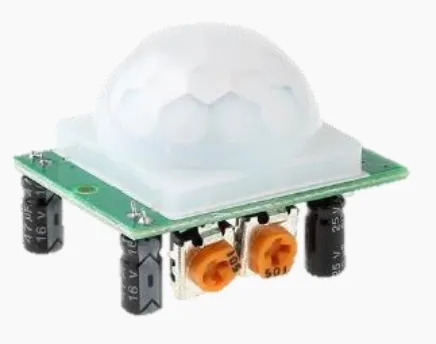
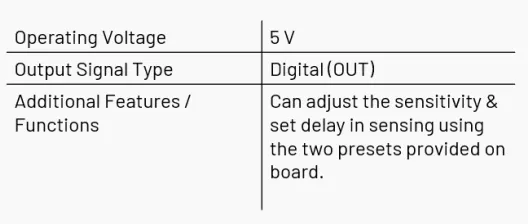
MQ## - Gas Sensor
MQ gas sensors are a series of gas detection devices commonly used to detect specific gases in the environment. Each sensor in the series is designed to detect a particular gas, like carbon monoxide (CO) or methane (CH4). They are widely used in applications such as gas leak detection and air quality monitoring.
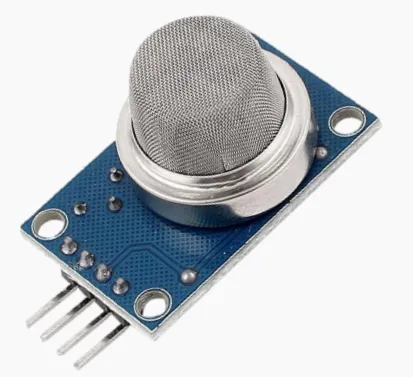
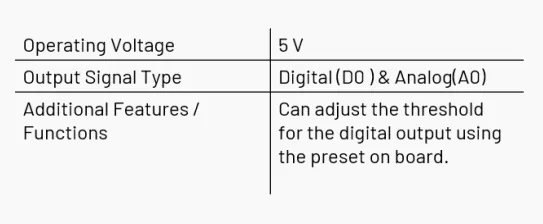
Temperature & Humidity Sensor
The DHT11 is a low-cost digital temperature and humidity sensor. It measures temperature in the range of 0-50°C (32- 122°F) and relative humidity between 20% and 80%. This sensor is commonly used in weather stations, environmental monitoring systems, and home automation projects to provide real-time temperature and humidity data.
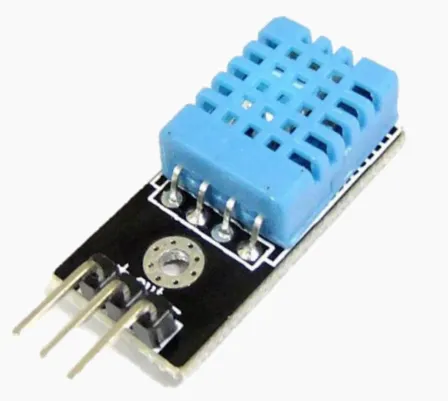
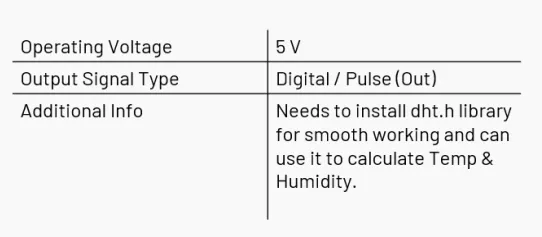
Vibration Sensor
A vibration sensor, also known as a vibration detector or accelerometer, is a device that measures and detects vibrations or oscillations in an object or environment. It is commonly used in machinery condition monitoring, structural health monitoring, and seismic activity detection. Vibration sensors are crucial for early fault detection and prevention in various applications.
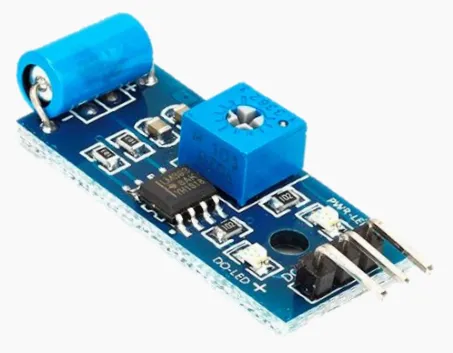
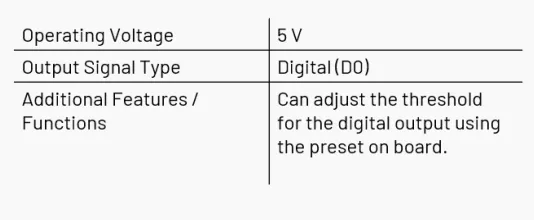
Potentiometer
A pot, short for "potentiometer," is an electrical component used to vary the electrical resistance in a circuit. It typically consists of a knob or dial that can be turned to change the resistance, thereby controlling the voltage or current in the circuit. Pots are commonly used in audio equipment, volume controls, and analog devices.
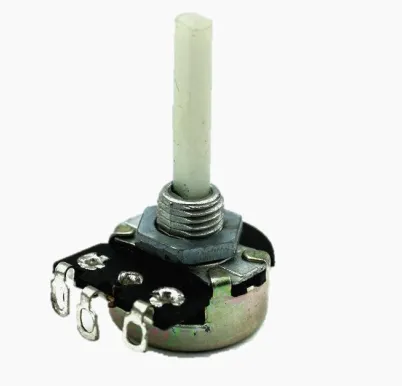
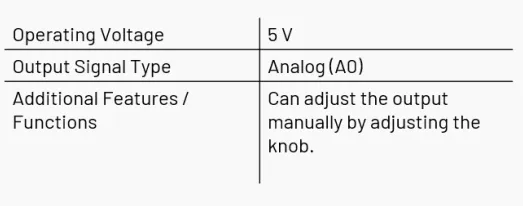
Joystick Module
A joystick is an input device used for controlling the movement of a cursor or object on a computer screen or for maneuvering physical devices like drones or gaming consoles. It typically consists of a stick that can be tilted or pushed in different directions, providing precise and multidirectional control. Joysticks are widely used in gaming, aviation, robotics, and industrial applications.

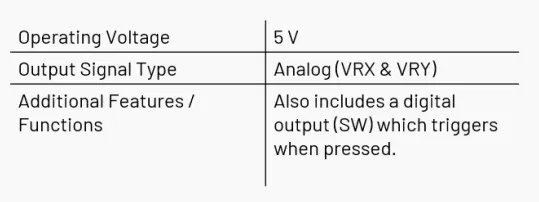
LEDs (Single Color)
A LED (Light Emitting Diode) module is a compact electronic device that incorporates one or more LEDs. It emits light when an electric current passes through it, providing energyefficient and long-lasting illumination. LED modules are used in various applications, including displays, signage, lighting fixtures, and indicators due to their energy efficiency and durability.
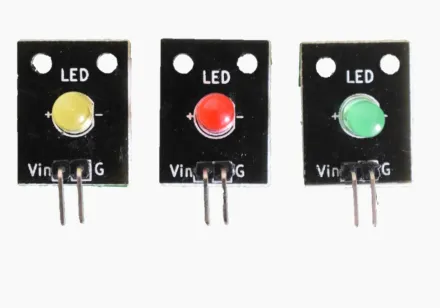
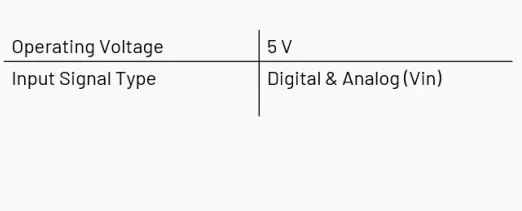
LEDs (RGB / Multi Color)
A RGB LED module is a compact device that contains three individual LEDs: one each for the colors red, green, and blue. By varying the intensity of these three colors, it can produce a wide range of colors. RGB LED modules are commonly used in lighting, displays, and decorative applications for creating vibrant and customizable illumination effects.
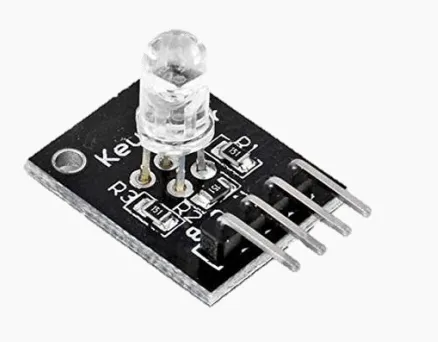
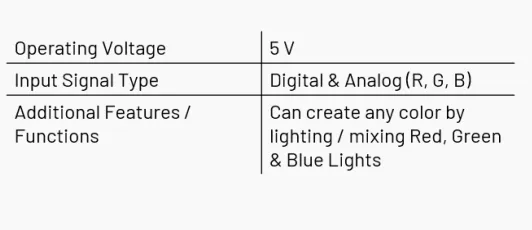
Piezo Buzzer
A piezo buzzer is an electronic sound-producing device that generates sound through the vibration of a piezoelectric element when an electrical signal is applied. It's commonly used for generating audible alerts, alarms, and tones in electronic devices like timers, alarms, and musical instruments due to its compact size and efficiency in producing sound.
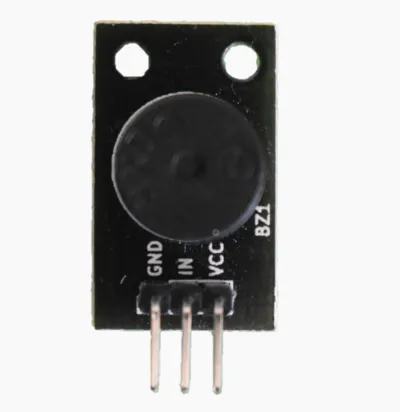

SG90 – Servo Motor
A servo motor is an electromechanical device that provides precise control of angular or linear position, velocity, and acceleration. It operates based on feedback, adjusting its shaft's position to maintain a desired target. Servo motors are widely used in robotics, automation, and various applications requiring precise motion control, such as robotic arms and CNC machinery

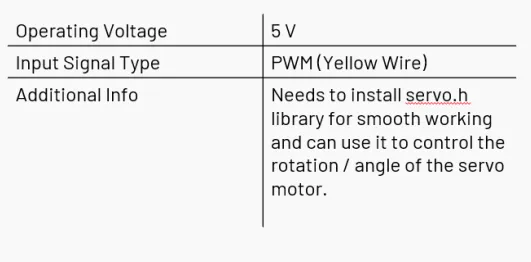
16x4 LCD
A 16x2 LCD (Liquid Crystal Display) is a common alphanumeric display module with 16 characters in each of its two rows, making a total of 32 characters. It's often used in electronic devices, microcontroller projects, and appliances to display text and simple graphics due to its ease of interfacing and readability.

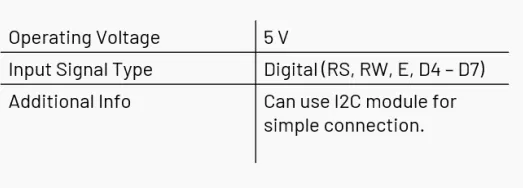
I2C Module
An I2C (Inter-Integrated Circuit) module is a hardware component that facilitates communication between microcontrollers, sensors, and other integrated circuits using the I2C serial communication protocol. It simplifies data exchange by providing standard connectors and circuitry for I2C bus communication, making it easier to connect and control various devices in embedded systems and electronics projects.
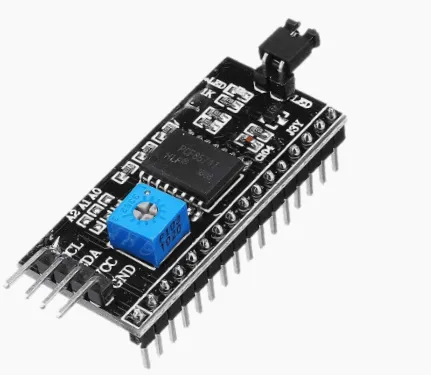

Voltage Regulation Module
A voltage regulation module for 12V, 5V, and 3.3V is a multifunctional device used in electronics to stabilize and provide precise output voltages of 12 volts, 5 volts, and 3.3 volts. It's crucial for powering various components and ICs in a system while ensuring they receive the correct voltage levels, preventing damage and ensuring reliable performance.
